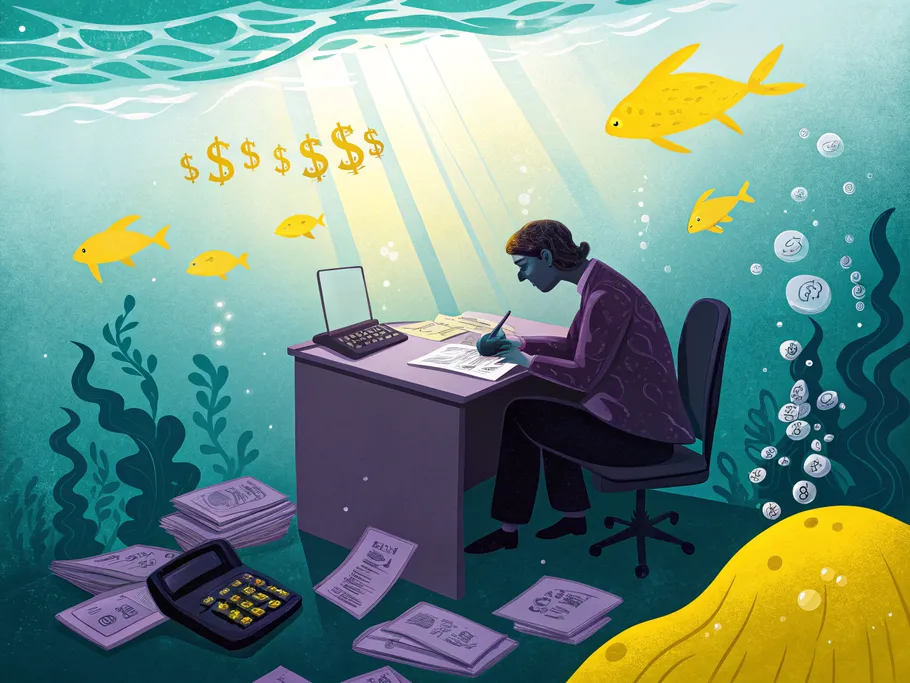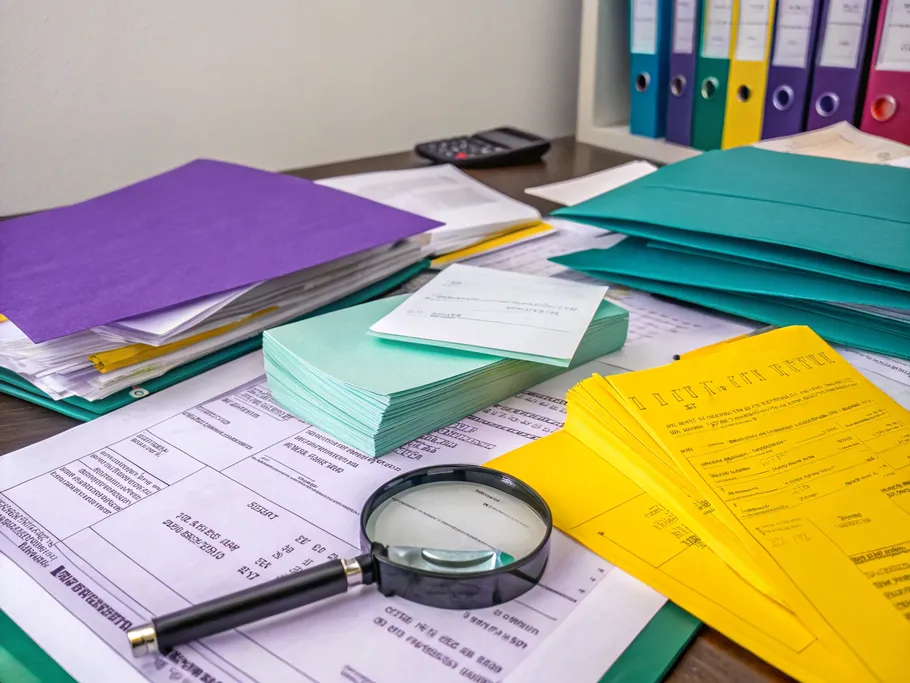Alright, entrepreneurs and future financial gurus, gather ’round! Ever tried building a house without checking if the foundation is solid? Spoiler alert: it doesn’t end well. The same goes for your business finances. That’s where balance sheet substantiation comes into play—think of it as the structural inspection that keeps your financial house from crumbling.
In the wild world of business, your balance sheet is more than just numbers on a page. It’s a snapshot of your company’s assets, liabilities, and equity—the big three that tell everyone from investors to your curious neighbor how financially healthy you are. But here’s the kicker: if those numbers aren’t accurate, you might as well be reading tea leaves.
What Is Balance Sheet Substantiation?
Let’s cut through the jargon. Balance sheet substantiation is the process of verifying that every item on your balance sheet is accurate, up-to-date, and matches your other financial records. It’s like reconciling your bank account after a weekend in Vegas—but on a much larger, less hangover-inducing scale.
This isn’t just a cursory glance, either. We’re talking about a deep dive into your financial records to ensure that every asset, liability, and piece of equity is accounted for and correctly classified. It’s the detective work that confirms your financial statements are legit and can stand up to scrutiny during a balance sheet audit.
Why bother? Because accuracy is everything. An unsubstantiated balance sheet can lead to faulty decision-making, regulatory fines, or even your investors giving you the side-eye. And trust us, that’s a look you want to avoid.
Breaking Down the Balance Sheet Substantiation Process
So, how does this whole balance sheet substantiation process work? Glad you asked. Think of it as a multi-step journey to financial enlightenment:
- Gather Your Financial Records: Pull together all your financial documents—general ledgers, subsidiary ledgers, bank statements, invoices, the works. It’s like assembling the pieces of a giant puzzle.
- Verify Balances: Check that the balances in your primary accounting system match those in your supporting documents. If they don’t, it’s time to play “Find the Difference.”
- Reconcile Discrepancies: When you spot inconsistencies, dig in and figure out why. Maybe it’s a timing issue, a misposted transaction, or just a good old-fashioned typo.
- Document Everything: Keep a clear record of all your findings and the actions you took. This isn’t just for your peace of mind—it’s also crucial for auditors and anyone else who wants to peek under the hood.
- Get Approval: Have someone else review your work. A fresh pair of eyes can catch things you might’ve missed, and it adds an extra layer of accountability.
Sound tedious? It can be. But with the right tools—like automated account reconciliation software—you can streamline the process and save yourself a ton of headache. Automation helps reduce human error, speeds up reconciliation, and lets you focus on more exciting things, like actually running your business.

In Simple Terms: Why Should You Care?
Still feeling like balance sheet substantiation is just accountant mumbo-jumbo? Let’s put it in plain English.
Imagine you’re cooking a complex recipe. You’ve got a list of ingredients (your assets), the stuff you need to avoid (your liabilities), and the final dish (your equity). Balance sheet substantiation is like double-checking that you’ve got all the right ingredients in the right amounts before you start cooking. Skip this step, and you might end up with a soufflé that falls flat—or worse, food poisoning.
Bottom line: It’s all about ensuring balance sheet integrity. When your balance sheet is accurate, you make better decisions, spot financial hiccups before they become disasters, and build trust with investors and stakeholders. Plus, you sleep better at night knowing your financial house is in order.
Framework for Effective Balance Sheet Substantiation
Ready to get your hands dirty? Here’s a framework to help you nail the substantiation process:
- Certify All Accounts: Ensure every asset, liability, and equity account is reviewed and certified. Yes, even that dusty petty cash account that hasn’t seen action since the office vending machine broke.
- Assign Responsibilities: Clearly define who prepares and reviews each part of the balance sheet. Accountability is key. Think of it as your financial buddy system.
- Risk Rating: Not all accounts are equal. Apply risk ratings to focus on areas that could cause bigger issues. High-risk accounts get the white-glove treatment.
- Embrace Automation: Use software to automate reconciliation where possible. It’s like having a personal assistant who never sleeps and doesn’t make mistakes. Well, almost.
- Investigate Exceptions: For any accounts flagged during automation, dig deeper. This is where your inner Sherlock Holmes comes in handy.
Challenges and How to Conquer Them
Let’s be real: balance sheet substantiation isn’t all sunshine and rainbows. There are challenges in financial reporting that can trip you up. But fear not! Every problem has a solution—or at least a workaround.
Challenge 1: Inadequate Timing
We’ve all been there—trying to cram a week’s worth of work into a day. Rushing the substantiation process can lead to mistakes, omissions, and a whole lot of regrets.
Solution 1: Start Early and Plan
Give your team enough time to do a thorough job. Set realistic deadlines and maybe, just maybe, avoid pulling all-nighters fueled by stale coffee.
Challenge 2: Human Inaccuracies
Manual processes are breeding grounds for errors. Misplaced decimal points, transposed numbers, or simply overlooking a transaction can throw off your entire balance sheet.
Solution 2: Automate Processes
Leverage automated account reconciliation software to minimize human error. Automation handles the number-crunching, so you can focus on analyzing the results—not just inputting data.
Challenge 3: Application Errors
Not all software is created equal. Using the wrong tools can be just as disastrous as not using any at all.

Solution 3: Choose the Right Tools
Invest in software that fits your business needs. Look for features like customization, scalability, and user-friendliness. Your software should be a solution, not an additional headache.
At the end of the day, balance sheet substantiation is about more than just ticking boxes—it’s about ensuring your business is on solid financial ground. It’s a best practice that safeguards your company’s reputation, builds investor confidence, and keeps those pesky auditors off your back.
Remember, a well-substantiated balance sheet is like a clean bill of health for your business. It tells the world you’re not just keeping the lights on—you’re thriving. So take the time, use the right tools, and embrace the process. Your future self (and your accountant) will thank you.
Takeaways
- Balance Sheet Substantiation Matters: It’s essential for verifying the accuracy of your financial statements and maintaining trust with stakeholders.
- Understand the Process: From gathering records to reconciling discrepancies, know each step and its importance.
- Embrace Automation: Use technology to streamline the process, reduce errors, and save time.
- Address Challenges Head-On: Plan appropriately, minimize human error, and choose the right tools to overcome common hurdles.
- Build a Solid Framework: Implement best practices like account certification, responsibility assignment, and risk assessment.
- Maintain Balance Sheet Integrity: A precise balance sheet leads to better decision-making and a stronger financial position.
Your balance sheet doesn’t have to be a mystery or a mess. With the right approach, you can master balance sheet substantiation and keep your financial house in tip-top shape.
